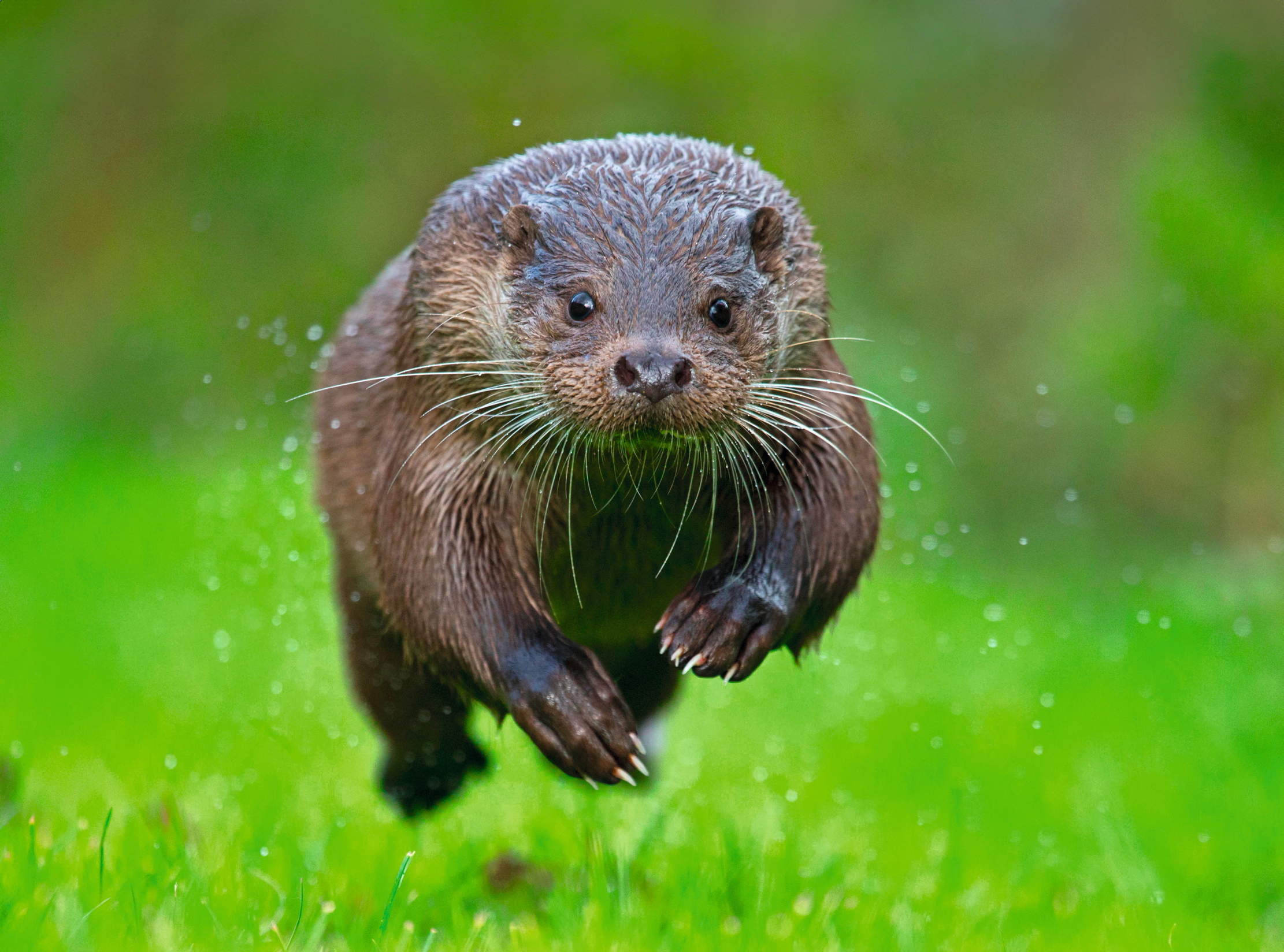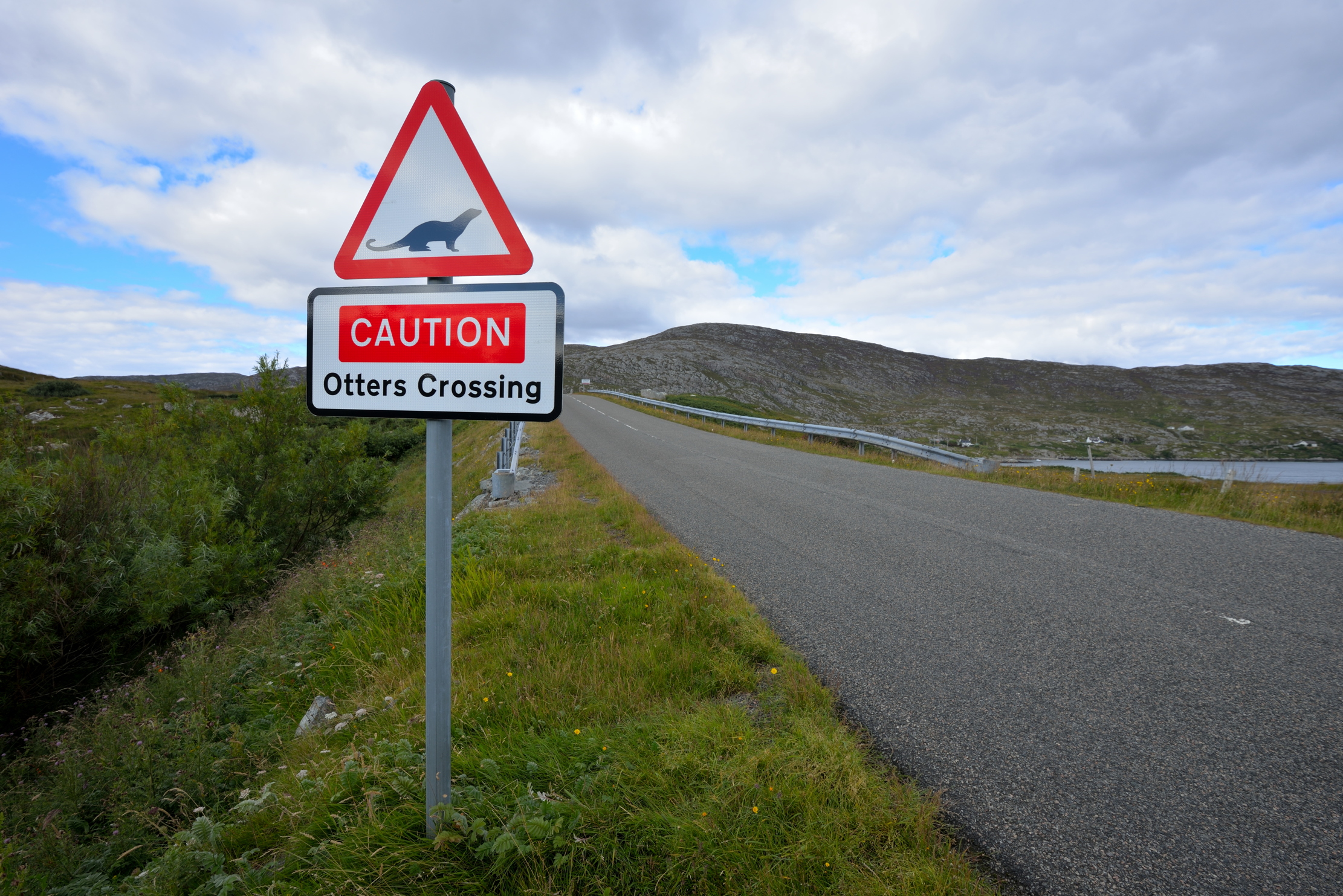'Neither fish nor flesh': The beguiling world of the otter
A creature of bewitching contrasts, the otter is ‘an animal that might have been specifically designed to please a child’ and has captured our imaginations since first we encountered its bright-eyed gaze.


A bronze otter sits on a wall in Bideford, Devon, holding a fish under its webbed paw. Behind it, the River Torridge flows quietly beneath a long medieval bridge. More than 400 miles to the north, another sculpted otter stands proud and alert, looking down over the Galloway coast.
The books that inspired these monuments, Tarka the Otter by Henry Williamson and Gavin Maxwell’s Ring of Bright Water, respectively, made otter-lovers of several generations. The two very different works, one written in 1927 and the other in 1960 — both still in print — together with their spin-off films, imprinted otters onto our collective consciousness. They also undoubtedly motivated some of the passionate conservationists who helped the animals recover from perilously low numbers in the late 20th century to their current, much healthier population.
Otters have always been with us. A species older than humans by several million years, Lutra lutra swims through our mythology. Otters appeared in Celtic and Norse myths as friendly, helpful creatures. The romantic Scottish island of Eilean Donan was named after an otter king who saved a selkie — a shape-shifting seal woman — from a man with bad intentions. They are in Christian legend, too. Two otters obligingly dried the feet of the 7th-century St Cuthbert after he waded into the sea to pray. He became their patron saint and is often depicted with the furry pair at his feet.
They have a strange power to haunt writers’ imaginations. The Wind in the Willows takes a turn for trippiness when Portly, the cheerful Otter’s missing son, is discovered under the protection of the god Pan. Hermione, of ‘Harry Potter’ fame, has an otter for her patronus or magic guardian. Ted Hughes claimed that Tarka the Otter ‘gave shape and words to his world’ after reading it repeatedly when young. His own otter poem for children captures their playfulness — ‘My moustaches bristle/As I mutter, or whistle’ — but his grown-up version features a primeval, roaming creature in search of a lost world, ‘crying to the old shape of the starlit land’.

A bright-eyed and bewhiskered otter face, with its small, round, lowset ears, is hard not to love. Their fantastically thick fur consists of outer guard hairs overlying a soft, dense undercoat. With their long bodies, supple tails and short legs, they are much larger than their mustelid relatives the stoat, polecat and weasel. Otters play with their cubs, whistle and whicker to communicate and hold their prey with their paws — all irresistibly appealing traits. Maxwell wrote that they were ‘an animal that might have been specifically designed to please a child’.
‘Neither fish nor flesh’, as Shakespeare’s Falstaff had it, they are certainly creatures of bewitching contrasts. Their sharp, sloping canine teeth and strong molars, able to fix slippery fish and crunch crustaceans, are a reminder that these are fierce and voracious predators. Their ‘clumsy amble’ (Kenneth Grahame) is lost the moment they enter the water and they are transformed into lithe aquanauts, leaving only a Champagne trail of bubbles. The ‘shimmering twister’ and ‘underwater thunderbolter’ of Robert Macfarlane’s The Lost Words can streak along at some 7mph and dive to depths of 60ft.
We love otters, but we nearly lost them. ‘The otter population crashed between the 1950s and 1970s due to organochlorine pesticides such as DDT and PCBs (polychlorinated biphenyls), which are used as electrical coolants,’ explains Elizabeth Chadwick, who leads the Cardiff University Otter Project. Her team collects data from otters found dead around Britain and has amassed valuable information on river habitats for more than 30 years. Dr Chadwick explains that top predators such as otters suffered from exposure to toxic chemicals that accumulated up the food chain, so they became sentinels for measuring pollution and monitoring trends.
Exquisite houses, the beauty of Nature, and how to get the most from your life, straight to your inbox.
The banning of these pollutants — and the otter’s protection by law since 1978 — together with concerted efforts at population reinforcement by organisations such as the Otter Trust, have slowly helped numbers recover. They are now in every major river. Most numerous in the West of England, Wales, Northumberland and Scotland, they live mainly on rivers and estuaries, ranging an average of six miles and sometimes a good deal further to reach canals, streams, lakes, marshes and the occasional well-stocked garden pond. They inhabit conurbations and remote coastal habitats.
'Tarka’s entanglements with gin-traps and struggles with his nemesis Deadlock the otterhound are unsparingly delivered, red in tooth and claw. That the tale was made into a film for children is still surprising'
Otters are adaptable. They are able to survive in our sewage- and phosphate-filled rivers, but face an array of new threats, from a cocktail of old and new chemicals to flooding, which can carry cubs out of holts. Avoiding fast-flowing culverts or impassable banksides — or simply taking shortcuts — can cause otters to cross roads in their search for food and territory. Cars are one of their greatest killers.
Finding places to rest or to bring up cubs is another big problem, according to Powys-based ecologist Tom Fairfield, who has spent decades studying otters: ‘Disturbance from development and agriculture, as well as from leisure activities and dogs, is a real concern. Otters need peaceful, secure breeding sites if they are going to thrive.’
Hard to spot, otters are ‘experts at vanishing,’ according to naturalist Sir John Lister-Kaye, who assisted Maxwell and now runs the Aigas Field Centre in the Highlands. Their elusiveness is part of their fascination, but it may be why we lack consideration for these largely nocturnal animals. We are simply not accustomed to viewing them.
‘I’ve seen people standing on a bridge not notice a group of otters just below,’ reflects Scott Povey, a gillie on the River Tweed for more than 21 years. Growing up in the 1970s, he never saw otters: ‘I only knew about Tarka.’ Now, there are two families on his beat and more on the river’s tributaries. Although some fishermen regarded them as a traditional enemy — Izaak Walton called them ‘villainous vermin’ in his Compleat Angler of 1653 — Mr Povey believes that attitudes have changed. He loves to see otters and says a healthy population is a sign of ample fish.
Nonetheless, otters have been forced to adapt their diet. Numbers of eels — easy prey and a good source of nourishment — have plummeted everywhere in the past 40 years and today’s Tweed otters are living largely on smaller fish. The animals are voracious hunters, eating frogs, crabs, snails, freshwater shrimps, waterfowl and even rabbits. Pleasingly, they are acquiring a taste for the invasive American signal crayfish, too.

Williamson deeply immersed himself in the otter’s quests for prey, as well as its fights with fierce competitors. Tarka’s entanglements with gin-traps and struggles with his nemesis Deadlock the otterhound are unsparingly delivered, red in tooth and claw. That the tale was made into a film for children is still surprising, but it is his incantatory prose that lingers. Few forget the opening lines, ‘Twilight over meadow and water, the eve-star shining above the hill’, or his evocative landscapes of ancient trees, desolate shores and owl-haunted coombes.
Maxwell’s account of life with two otters rescued from Iraq and West Africa contains more charm. His companions wear harnesses, sleep in his bed and share his morning bath. The first, Mij, brought back on an escapade-filled passenger-plane ride, goes on the sleeper train and is taken shopping in Harrods; Edal enjoys playing football and hiding toys in Maxwell’s shoes.
This man was a dedicated, but eccentric naturalist in an era when some thought the best way to understand an animal was to domesticate it. The 1969 film Ring of Bright Water starring Bill Travers and Virginia McKenna helped to endear otters to a new audience, some of whom began to find their way to Maxwell’s Highland hideaway, much to the reclusive author’s vexation.
Writers, artists and Nature-lovers are still otter-dreamers. The endearing creatures are a beacon of conservation, one that must never again be in danger of being extinguished.

Badgers, weasels, otters, stoats and more: A guide to Britain's mustelids
Lithe, opportunistic and with a predilection for poultry, these elusive, often pocket-sized predators have long raised a stink for farmers
Laura Parker is a countryside writer who contributes to the Scottish Field, the Dundee Courier and Little Toller’s nature journal The Clearing. She lives in the Cotswolds and keeps a small flock of Shetland sheep. You can follow her on X and Instagram: @laura_parkle.
